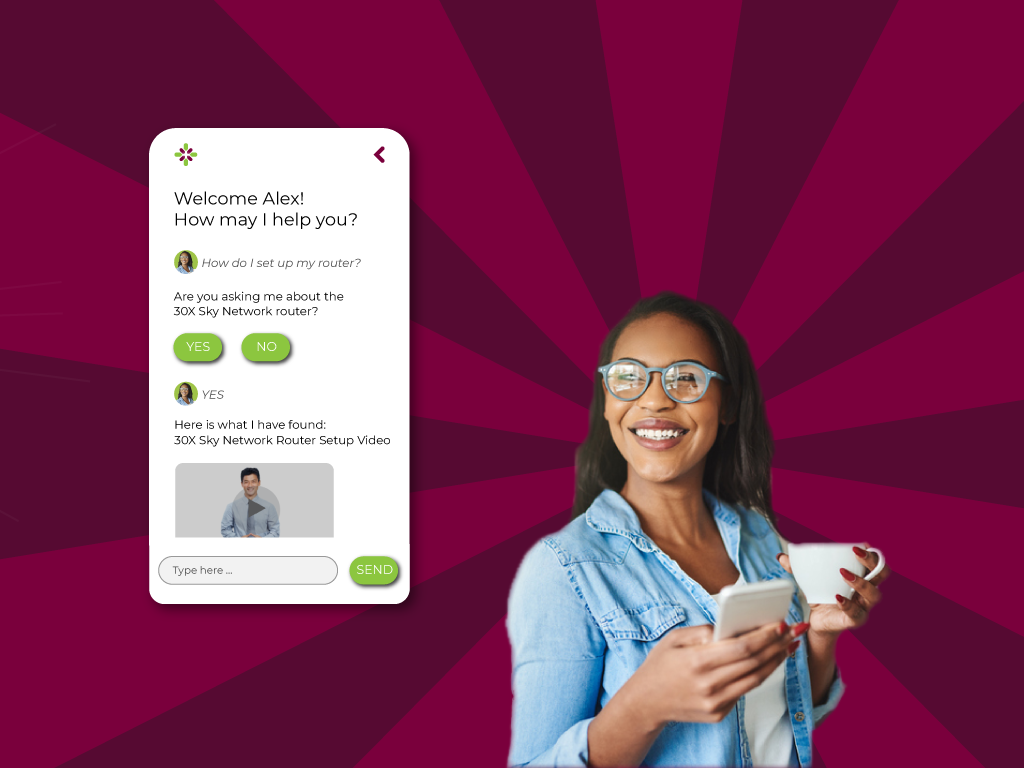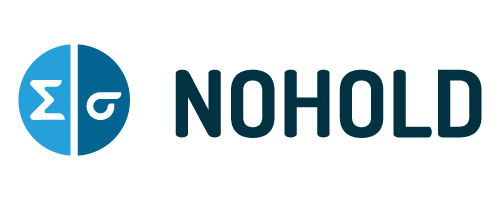
noHold has been deploying Conversational Artificial Intelligence (AI) for trusted brands for the past 20+ years. Our experience spans across industries (security software, government, consumer electronics, telecommunications, education, etc.) and languages (15 live languages and counting). noHold has four patents on various AI technologies and a wealth of best practices when it comes to helping customers to improve the overall experience. We are happy to share what we have learned and help you navigate to the right solution to meet your goals.
Here is a collection of best practices to help you on your Conversational AI journey:
1) You don’t have to know every question your audience will ask
You don’t have to cover every product and you should not have to waste time scripting every question variation. Start small with the top questions affecting your contact center. Leverage call, email and live chat transcripts to train the AI Assistant. Select a solution that empowers you to import content to speed up the process.
2) Do you really need an avatar?
Avatars can be engaging and may drive a certain type of behavior. However, when deploying your own AI-based Virtual Assistant, use customer data to make an informed decision when it comes to avatars. The best approach is to test it on your audience. Some of our customers have conducted a/b testing to see if an avatar makes sense.
3) Increase adoption
Will your audience use Conversational AI? You have to create excitement and awareness about your new bot. Promoting the new service and educating your audience about its value is key. Here are some practices that have worked for our customers: Leverage marketing emails with highlights and short how-to videos; include direct links to the AI Assistant in your email signature; make it easy for customers to launch and get quick answers with eye-catching QR codes; promote in phone recordings; add links to the AI-based Virtual Assistant on relevant properties such as blog, social media, and mobile app.
4) Brand recognition doesn’t mean they align with your goals
Don’t assume that a marquee brand will meet your goals or expectations. Make a short list of vendors in the Conversational AI space and conduct a competitive analysis. Include a list of the goals you wish to achieve and rank the vendors based on their ability to meet your needs and partner with you. noHold will help you build a competitive analysis and fill in the blanks.
5) Leverage unstructured content responsibly
There is value in self-learning technologies but we have all seen how this can go awry. Our suggestion? Take a blended approach. Leverage the power of self-learning solutions but, make sure they enter the system in ‘draft mode.’ This way, humans can vet the answers before making them publicly available.
6) Integrate with other systems
Conversational AI can be an integral part of your customer experience ecosystem. Often, our customers deploy it as the first point of contact between their brand and their audience. First, choose a vendor that has Application Programming Interfaces (APIs) available. When connecting the AI-based Virtual Assistant to your ecosystem, we suggest a phased approach. Start by answering the most frequently asked questions (80/20 rule) and then let the conversations drive the next phases. Here are some examples of the most requested and beneficial integrations: Customer Relationship Management (CRM), Live Chat, Electronic Health Records (EHR), and search. Our customers have influenced smart applications to improve the customer experience. For example, when integrating with live chat, one customer leveraged APIs to: tell the end user how many minutes in the queue while they wait; let them know what info they will need before an agent connects in order to drive efficiency and decrease Average Handle Time (AHT). When an agent is unavailable leverage Conversational AI to interact with end users. If a human is needed but unavailable, provide a copy of the interaction log in the escalation in order to make the follow up more productive.
7) What are the must-have administrative reports?
Out of noHold’s 34 off-the-shelf reports, these are the most popular reports used by our customers:
- Dashboard – Displays trends of the usage over time, most common questions and most popular content
- Totals & Averages – Highlights the most common KPIs such as total usage, answer rate and escalation rate
- Solution Usage – Shows usage & voted helpfulness rates for all solutions and provides a trend graph with usage over time for each solution
- User Phrases – Captures the Voice of the Customer. Some noHold clients ask for a custom view of this report which gives them details about user phrases including the specific times asked for each phrase
8) Should you measure the AI’s effectiveness based on user votes?
Not necessarily. We have learned that when a guest is happy with the answer they receive, most carry on without voting. We have also seen interactions where the visitor votes a solution unhelpful based on whether or not they liked the solution. The correct answer will not always be the popular answer. We suggest that you measure and take the voting into consideration and also conduct occasional conversation sampling analysis. Random session analysis allows you to really see the conversation logs. Think of it like this: You likely record calls for training and quality purposes so the same should be true for chats, whether with humans or AI.
9) Placement
Where is the best place to position an AI Assistant? Our best advice is to place it front and center, especially to preempt your high-volume channels such as live chat. Let the AI Assistant filter and respond to the repetitive questions, then escalate to a human when necessary. Here are some of our suggestions for placement: Contact us page, mobile app, in front of live chat, website homepage, product pages.
10) The most popular Key Performance Indicators (KPIs) used by our customers.
- Total Volume of Visitors – This shows adoption and can be trended over time as the Conversational AI is deployed in different placements and promoted in different ways. Visitor Volume also helps to track seasonal trends such as usage changes during tax season, back-to-school and holidays.
- Answer Rate – This is an indicator of how well the Conversational AI can answer user questions. It will improve over time as knowledge gaps are filled and the AI is trained on the various ways users ask questions
- Escalation Rate – Shows how often people opt to escalate to another support channel through the Conversational AI
These are just some of the best practices we have learned over 20+ years of developing and deploying Conversational AI for industry leaders. Interested in the details? Want to know more insider secrets related to our experience? Contact us.
